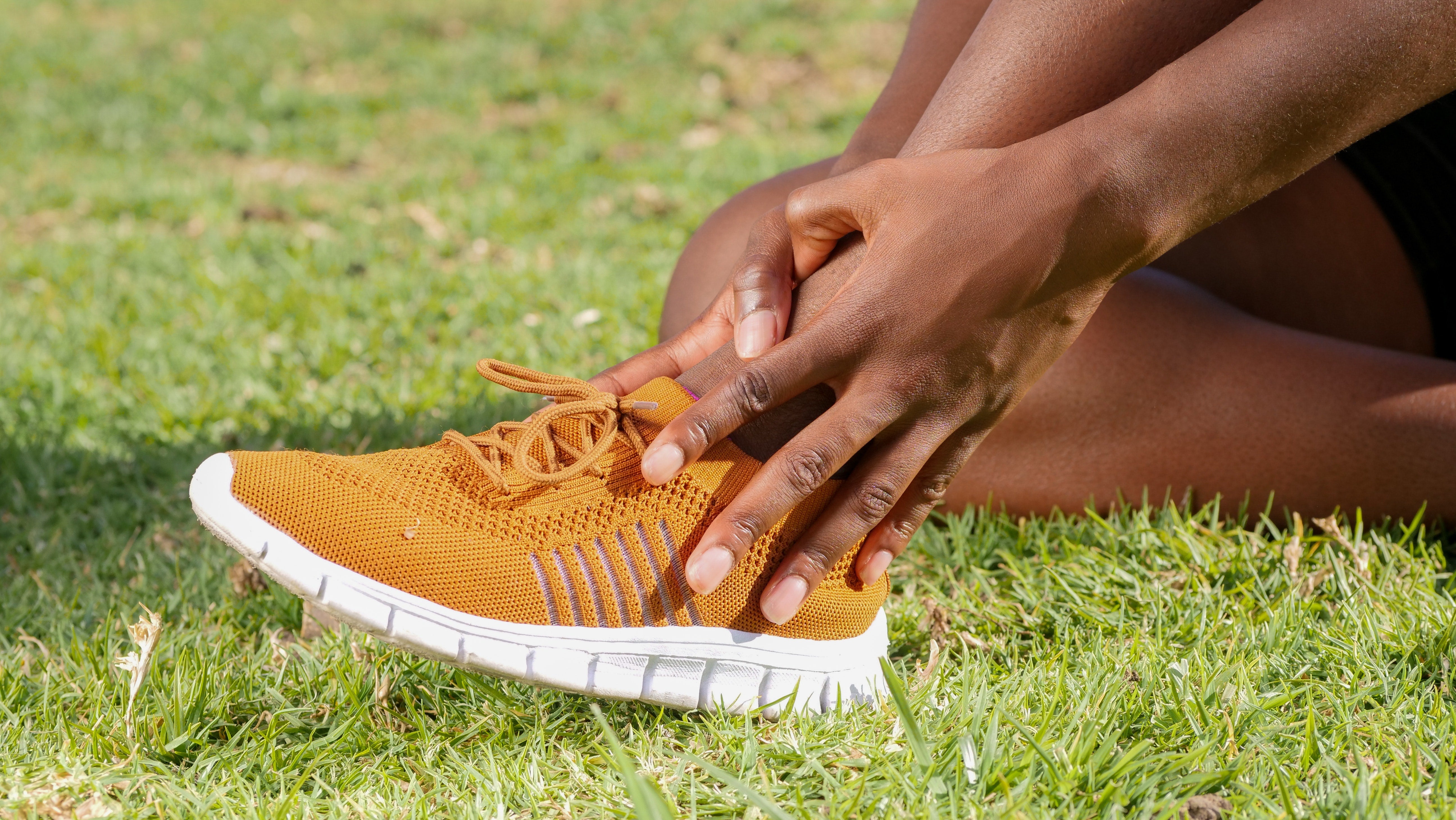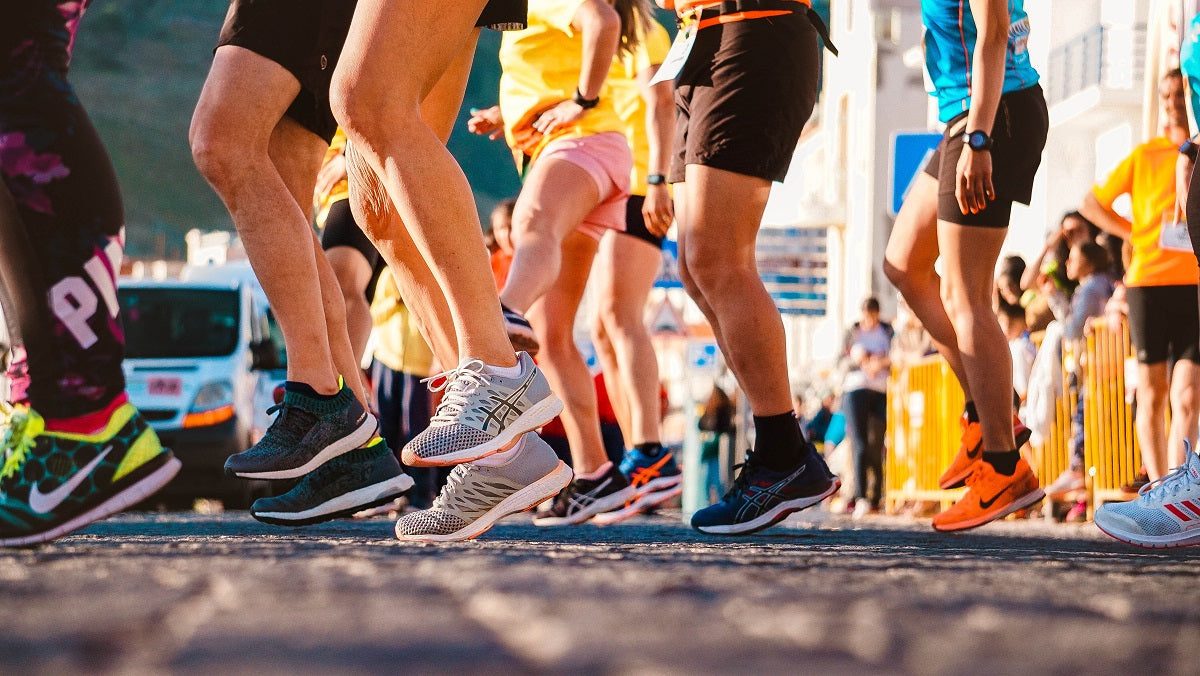Whether you already run regularly or you’re just starting out, you’ve likely heard about the importance of finding the right running shoes. The right shoes can reduce the risk of injury, enhance your performance, and make your runs more enjoyable. The wrong shoes, on the other hand, can cause pain and discomfort and can even increase your chances of getting injured.
But with so many options to choose from, finding the perfect running shoes for you can seem like a daunting task. We’d like to take the guesswork out of the process. So, with the help of some experts, here are five of our top tips to help you choose the perfect pair.
Learn About Your Gait

Your gait refers to your running style. Specifically, it references how much your feet pronate (roll inwards) and which part of your foot hits the ground first when you run.
There are three main types of running styles to be aware of:
- Neutral: your foot lands flat
- Pronated: your foot rolls inwards
- Supinated: your foot rolls outwards
“Pronation and neutral running have specific shoes designed to help the user’s running style” says Simon Scholes, a former athlete and coach. “Supination is different and tends to either need help in coaching of your running style, or speaking to someone about orthotics” (orthotics are custom-made forms for your feet, usually worn as shoe inserts.)
You can get your gait analyzed at a running store. You can also get an indication by putting your hand inside your shoe and feeling for the indentation made by the ball of your foot.
Consider the Surfaces You Run On

Where will you be running? All surfaces are not the same and this can be a major factor in choosing appropriate running shoes.
“Figure out what type of running you are going to be doing,” says Personal Trainer Ben Simpkins. “Will you be training primarily on the roads or are you looking at doing some cross country? You may also have a local track you can train on. Each surface will need a specific shoe.”
If you run on different types of surfaces, you might need more than one pair of shoes. If this is out of your budget, it is best to choose one type of running and stick to it rather than using the wrong shoes for the wrong surface. You can always branch out and invest in some different shoes later, if you want to.
Think About Distance

Are you training for a marathon or trying to beat your personal best over the 5k distance? Perhaps racing feels a long way off and just getting a few miles per week under your belt is your goal.
Different distances require different shoes. For example, if you’re training over long distances, a more cushioned shoe is likely to be a good choice. And if greater speed over shorter distances is your goal, then a more flexible shoe can be helpful.
Always look for shoes that are appropriate for your chosen distance. If you change your routine up later (for example, you start stepping up your weekly mileage), then changing your shoes may also be necessary.
Don’t Forget Socks

“Getting proper running socks can be a game changer for comfort and a reduction in blisters,” Ben says. Always try on any potential running shoes with the socks you’ll be running in, too. “If you try the trainers on with your normal socks but then put on a slightly thicker running sock, it can make the trainer uncomfortable,” he adds.
Ideally, look for running socks that offer extra padding on the balls of the feet and sit at least an inch above the top of your shoe. This will ensure that the shoe doesn’t rub your heel and cause blisters when you run.
Check out our active socks, which offer moisture-wicking properties for ultimate all-day comfort and are suitable for a wide range of activities including running, walking, and working out.
Know Your Body

You live in your body 24/7, meaning that you are uniquely placed to understand how things feel for you.
As you try out different running shoes, pay close attention to how they feel. Don’t be pushed into buying shoes that don't feel right for you, even if someone else swears by them. What is right for one person is not necessarily right for another, and the wrong shoe can lead to injury. Listen to your body and if something feels wrong, always pay attention to that.
Happy running!
Read more

Please note that this post is provided for informational purposes only and should not be taken as medical advice. If you have any concerns please consult an appropriately qualified medical profess...

Please note that this post is provided for informational purposes only and should not be taken as medical advice. If you have any concerns please consult an appropriately qualified medical profess...






Leave a comment
All comments are moderated before being published.
This site is protected by hCaptcha and the hCaptcha Privacy Policy and Terms of Service apply.